…surgical team looks forward to bringing the first hybrid OR to the Peninsula
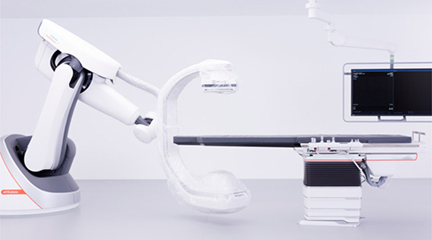 When vascular surgeons Dr. Joseph Piotrowski and Dr. Russell Campbell joined Riverside Health System a dozen years ago, they brought with them years of experience in performing complex and intricate endovascular procedures. “In fact,” Dr. Piotrowski remembers, “we did the first endovascular aneurysm repair ever performed at the hospital.”
When vascular surgeons Dr. Joseph Piotrowski and Dr. Russell Campbell joined Riverside Health System a dozen years ago, they brought with them years of experience in performing complex and intricate endovascular procedures. “In fact,” Dr. Piotrowski remembers, “we did the first endovascular aneurysm repair ever performed at the hospital.”
Both Board certified and fellowship trained in vascular surgery, Drs. Piotrowski and Campbell handled all of the endovascular procedures at Riverside for greater than five years, taking call every night and every other weekend. As word of their expertise spread and more patients were referred, it became clear they would need to expand, and Riverside approved the addition of two fellowship trained surgeons at the same time: Dr. Todd Jenkins and Dr. Ernest Zichal. When Dr. Campbell retired, Dr. Adam Sagarwala was recruited to join the team. These surgeons, supported by Megan Cobb, PA and Kristin Dehoux, NP, constitute the endovascular surgical department at Riverside.
Today, the team treats the wide variety of vascular conditions, which include diseases of the peripheral and carotid arteries, venous disease, aortic aneurysms, blood clotting disorders and lymphedema. “In other words,” says Dr. Sagarwala, “we treat almost every artery and vein in the body: anything involving the descending aorta, the abdominal aorta, the arteries from that point down the legs – so iliacs, femorals, aneurysmal disease and atherosclerotic vascular disease, including renal artery stents. We treat venous reflux, varicose veins, DVTs, pulmonary embolism, and placing IVC filters.”
By ‘almost’ every artery and vein, Dr. Sagarwala means that intracranial cases are handled by neurosurgeons and neurointerventionalists, while coronary arteries and cases involving the ascending aorta are done by cardiothoracic surgeons. “The rest are ours,” he says.
There’s one area of overlap, Dr. Jenkins explains: “The aortic arch is kind of a hybrid between vascular surgeons and cardiothoracic surgeons. The arch travels backward, so it ultimately runs to the left of the trachea. We work together, employing a multidisciplinary approach for these procedures.”
All of the work is intricate and exacting. Surgeries are intense, requiring extraordinary skill and exceptional visualization. The skill has been there, and now, the surgeons are preparing to open a suite that will match that skill with the latest technology.
After a nearly six-year process, which involved tremendous research and negotiations among surgeons, administrators and planners, Riverside is excited to announce that the hospital is pursuing the implementation of a hybrid cardiovascular operating room – the first on the Peninsula.
The need was obvious: traditionally, diagnostic procedures like MRI, CT or angiography, and even some interventional procedures like balloon angioplasty and stenting, have been performed in an Interventional Radiology (IR) and Cardiac Catheterization suite, where the most precise images are provided by large, highest quality, fixed equipment. Unlike operating rooms, IR suites are not as suitable for complex and high risk cardiac cases. Conversely operating rooms, with their need for surgical equipment and anesthesia, have been unable to accommodate the larger imaging technology. Surgeons have relied on smaller mobile C-arms, which produce images of lesser quality than the newer, fixed technology. The high x-ray power of fixed imaging allows clear visualization of devices, even in obese patients and in a lateral position; and 3D guidance can be supported by fusing preoperative 3D images with fluoroscopy.
“This hybrid operating room will allow us to simultaneously reach a diagnosis and provide treatment in real time, during surgical interventions,” Dr. Piotrowski says. “It will let us treat patients with highly complex anatomies, many of whom we’ve had to send elsewhere for the care they need. It will offer patients the most sophisticated care, without having to leave the community.”
Dr. Sagarwala explains: “For example, if we’re dealing with a very complicated case like a bypass of the leg, but we also need to do angiograms of the iliac or the aorta, we’ll have the highest quality imaging right in the OR itself, and be able to accomplish the combination procedure in the sterile environment.”
Similarly, Dr. Jenkins emphasizes, with the anticipation of the addition of the hybrid room and its superior imaging quality, the surgeons can expand to adding branch devices for the aortic arch. “We’ll be able to do fenestrated endovascular aneurysm repair (FEVARs) and thoracoabdominal aneurysm repair (TEVARs) as well. We’ll be able to expand the amount of disease and complexity of disease that we’re seeing now, and be able to treat it in house; and again, patients won’t have to incur the extra expense and stress of having to travel for care.”
Outfitting a Hybrid OR
Because operating rooms have generally been built on a small scale, the addition of very large imaging equipment to an already crowded space presented a challenge. Dr. Zichal, who took the lead on behalf of the vascular surgeons, worked with hospital planners to identify a useable, appropriate space. Smaller areas within the operating department itself were reconfigured to accommodate the larger space, which will house the main piece of equipment: a Siemens hybrid vascular system with a floor mounted fixed C-arm. “We chose the floor mounted system, as opposed to a ceiling mount, because of its clear advantage in an OR environment. With no ceiling component, there’s only minimal impact on the laminar airflow.”
This system will be supported by new surgical lights and gasses, video integration, a pressure injector, anesthesia and hemodynamic carts and information systems technology. “We’ll also acquire a specially designed bed for the hybrid room,” Dr. Zichal adds, explaining that “most regular OR beds are made of metal, so we can’t use the fluoroscope because we can’t see through metal. With the special bed, we can see straight through it.”
It’s not just the physical space that must be reconfigured, Dr. Zichal adds: “The personnel who staff an IR lab have different training than those who work in operating rooms. They have different vocabularies and different skill sets. They know their specific equipment and environment, but not necessarily those of the other team. So there will of necessity be a lot of staff cross-training before we’re fully operational.”
The Benefits of the Hybrid OR are Far Reaching
Because so many more procedures will be available in the hybrid OR, many more patients can be treated. “With the number of patients we see increasing every year, having the hybrid room in addition to our standard ORs and the IR lab will enable us to do multiple cases at a time,” Dr. Sagarwala says. “And when the hybrid room isn’t required for the complex vascular surgeries, it can still be used as a regular OR for more routine cases, so it will rarely be vacant.”
Another benefit is the reduction in radiation. “Our OR techs, nurses, staff and patients as well will have less radiation exposure,” Dr. Zichal says. “We’ll be able to offer the same high level of vascular care that’s available in larger academic settings for more patients, more effectively and in a safer environment. Their hospital stays will be shorter, and recovery in their own homes more comfortable.”
“This hybrid room will be a game-changer for the people of the Peninsula and the Eastern Shore,” Dr. Piotrowski says. “And it will be implemented through the Riverside Care Difference. As surgeons, we never forget that while we have this wonderful technology, we’re still doctors. We’re still the ones talking to patients about life and death issues. We know it’s the personal touch that makes the difference.”
Riverside Vascular Specialists
Three offices serving the Hampton Roads area
Peninsula – 757-534-5340
Gloucester – 757-534-5340
Williamsburg – 757-229-7939
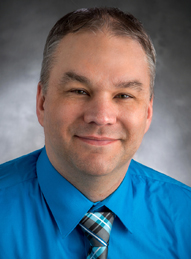 Todd Jenkins, MD
Todd Jenkins, MD
Dr. Jenkins earned his medical degree from Eastern Virginia Medical School, Norfolk, Virginia. He completed his general surgical residency at The Carilion Clinic in Roanoke and his fellowship in Vascular Surgery at the University of Tennessee Health Sciences Center. He is Board certified in Vascular Surgery.
Dr. Jenkins is fellowship trained for the whole spectrum of vascular care. He has a special interest in the management and treatment of carotid disease and in minimally invasive procedures. He sees patients in the Peninsula office and in Williamsburg.
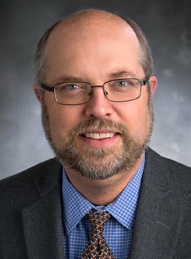 Joseph Piotrowski, MD, FACS
Joseph Piotrowski, MD, FACS
Dr. Piotrowski earned his medical degree at Hahnemann School of Medicine in Pennsylvania. He completed a general surgery residency program at the University of Colorado and a vascular surgery residency program at the University of Arizona, where he also completed his vascular surgery fellowship.
Dr. Piotrowski has expertise in big open surgeries. He is Board certified by the American Board of General and Vascular Surgery and a Fellow in the American College of Surgeons.
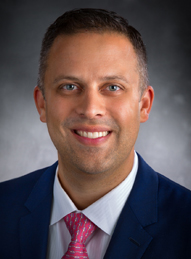 Adam Sagarwala, DO
Adam Sagarwala, DO
After earning a master’s degree in biomedical engineering at the University of Texas, Dr. Sagarwala received his medical degree from the Texas College of Osteopathic Medicine at the University of North Texas Health Science Center. He completed a general surgery internship at St. Barnabas Hospital in the Bronx, New York and a general surgery residency at the Ohio University Heritage College of Osteopathic Medicine Doctors Hospital. He subsequently completed a fellowship in vascular surgery at St. Barnabas Hospital and Beth Israel Hospital in Newark, New Jersey.
Dr. Sagarwala is Board certified in general surgery and board eligible in vascular surgery.
He specializes in complex aortic disease, including open and endovascular repair options, as well as cutting-edge, non-invasive treatment of peripheral arterial disease.
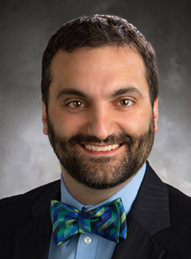 Ernest Zichal, DO
Ernest Zichal, DO
Dr. Zichal earned his medical degree at Kansas City University of Medicine and Biosciences. He completed his surgical residencies at Palms West Hospital in Florida and at Saint Barnabas Hospital in the Bronx, NY, where he was chief surgical resident. Dr. Zichal completed a Vascular Surgery Fellowship at the Deborah Heart and Lung Center. He is Board certified by the American Osteopathic Board of Surgery in general and vascular surgery.
Dr. Zichal specializes in the treatment and management of arterial disease. He has a special interest in using minimally invasive procedures to re-establish blood flow in areas of need.

